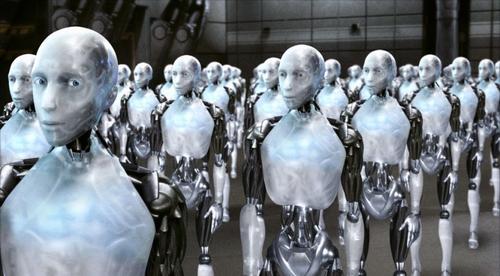Peering Into a Future Full of Robots
August 7, 2015

Robots have long been a source of fear and fascination, and Hollywood has always swung from one extreme to the other. Movies such as "I, Robot" portend a terrible future in which robots strip humans of their own free will, while "Chappie" praises robots as humanity's final hope to avoid extinction. Robots in film have straddled the line between saviors and villains for years, leaving us to wonder what a world filled with robots would actually be like.
Important questions remain regarding the future of robots. Just how beneficial are they to society? Concerns have materialized as robots threaten the job security of humans everywhere. An Oxford University study predicts that 47% of US jobs could be automated within the next 20 years.
As frightening as that sounds, robotic automation is happening - fast. An estimated $1.5 billion market for consumer and business robots will emerge by 2019, growing seven times faster than the market for manufacturing robots. Like it or not, robots will continue to play an increasingly important role in our daily lives.

Given the expected rise of consumer robots, now might be a good time to think about what the future might look like. Here are the top three predictions for the future of robotics, including how these developments will change technology as we know it.
1. Artificial Intelligence Will Face Regulation
The thought of fighting robots that are smarter than their creators has been the plotline of hundreds of movies depicting the downfall of the human race. Elon Musk previously added fuel to the fire by commenting that artificial intelligence (AI) is our "biggest existential threat" and even going on to compare AI research to conjuring demons.
These concerns have recently been echoed by other influential figures such as Stephen Hawking and Steve Wozniak, further raising questions about how much robots pose as a threat to humanity. Calls for regulation of AI have been so prevalent that in 2009 the Association for the Advancement of Artificial Intelligence (AAAI) held a conference dedicated entirely to whether robots could ever achieve alarming levels of freedom.
Mustafa Suleyman, the head of Applied AI at Google DeepMind, recently brushed aside the thought of rogue robots determined to end the human race while speaking at a machine learning event in London. Suleyman went on to stress that fear of AI needlessly directs attention away from its ability to solve some of the world's biggest problems, such as global warming and food security.
MORE FROM DESIGN NEWS: DARPA Asks Teens to Determine Future Societal Impact of Robots
Despite its potential to advance society, AI will continue to face scrutiny from those concerned about machines becoming smarter than their inventors. Expect the battle for regulation of AI to rage on for the next five years, and for government or industry standards to start appearing.
2. Designers Will Move Away from Humanoid Robots
As robots become a more common sight in homes and workplaces, humanoid aesthetics will be an important factor in the adoption of new robots. One major roadblock in the way of a seamless transition to a society filled with robots is the "uncanny valley," a hypothesis that describes our revulsion toward things that appear and move like humans but are not quite human.
If humanoid robots are expected to serve more social functions that place them in regular contact with humans, more must be done to suppress the uncanny valley effect. In order to make humans more comfortable around robots and easier to interact with them, robotics engineers will seek to improve semi-humanoid developments that retain simple human traits as well as traditional machine forms.
A recent example in the push to eliminate robots that trigger the uncanny valley effect is Sawyer, a new robot from Rethink Robotics. The younger brother Baxter, a repetitive-task cooperative robot, Sawyer is smaller, lighter, and more precise.
What makes both robots unique, however, are their motion-sensitive animated eyes. The lack of human features helps to prevent the uncanny valley effect from taking place, while the cartoon eyes promote collaboration with human workers. Together, Sawyer and Baxter have set the precedent for a future of semi-humanoid robots.
3. Drones Will Reach Widespread Adoption
Drones have been a topic of much debate in recent months as concerns over safety, efficiency, and regulation have emerged. Despite this, consumers and businesses are continuing to use unmanned drones in a number of innovative ways.
About the Author(s)
You May Also Like





